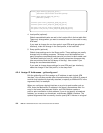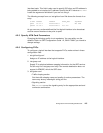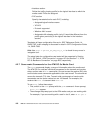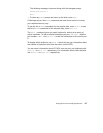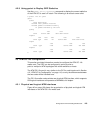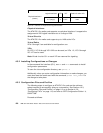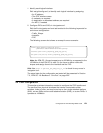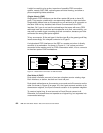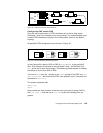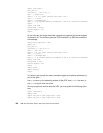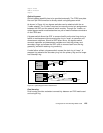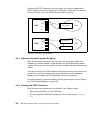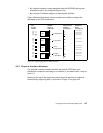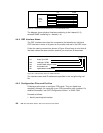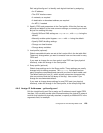
122 IBM 9077 SP Switch Router: Get Connected to the SP Switch
It might be useful to give a short overview of possible FDDI connection
options, namely SAS, DAS, optical bypass and dual homing, and show a
picture explaining these scenarios.
Single Attach (SAS)
Single attach FDDI interfaces can be either master (M) ports or slave (S)
ports. They require a cable with a corresponding master or slave connector.
Single attach cables have an M connector on one end and an S connector on
the other. With no key installed, both M and S connectors fit the FDDI
interface. So if you do not use the colored keys that come with every FDDI
cable and mark the connectors and receptacles as to their use correctly, you
may well be unable to get a working physical connection, because you have
connected the wrong fiber ports together.
To key a connector, fit the red type A, the blue type B or the green type M key
inserts accordingly. An unkeyed connector is of type S.
A single attach FDDI interface on the GRF is a master port when it directly
connects to a workstation. As shown in Figure 41, it is a slave port when
connected to the master port of an FDDI concentrator which, in turn, connects
to the slave ports of SAS workstations.
Figure 41. Master/Slave Connectors for SAS Interfaces
Dual Attach (DAS)
Dual attach interfaces connect to form two unbroken counter-rotating rings.
Each interface, or station, has both an A and a B port.
Dual attach cables have an A connector on one end and a B connector on the
other. As shown in Figure 42 on page 123, the A port connects a station to its
downstream neighbor; the B port connects a station to its upstream neighbor.
To create a logical ring, A must connect to B and B must connect to A.
Otherwise, the network does not operate as a logical ring, but segments into
unconnected subrings.
FDDI
A0
B1
A1
B0
M
M
S
S
S
S
M
M
M
M
M
M
M
M
S
S
S
S
S
S
FDDI
Concentrator



